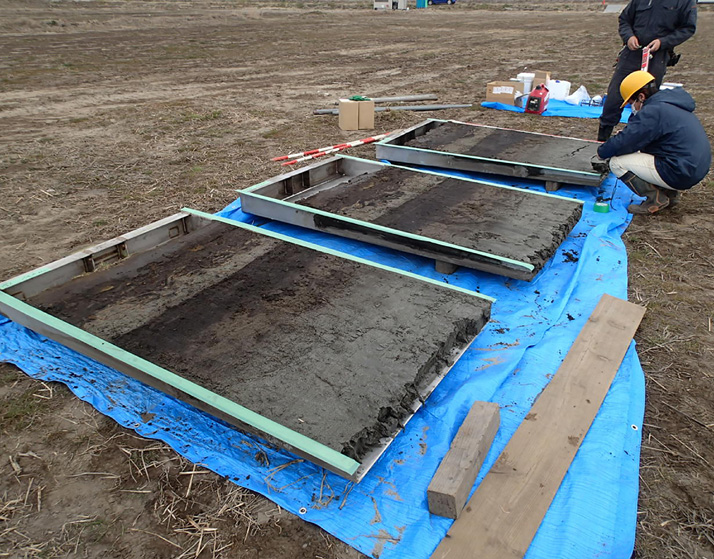Research on Tsunami Deposits: Ready for Future Earthquakes

An understanding of the history of past great earthquakes is essential for minimizing the damage caused by future earthquakes. It is important, especially in an island country such as Japan that is surrounded by the sea on all sides, to anticipate future earthquake-generated tsunami inundation using historical and geological records. Here we introduce our study on paleotsunamis using a peeled sample display of the tsunami deposit in the Sendai Plain.
A volcanic ash layer was used as a timeline for local geology. Large-scale eruptions result in the settling of volcanic ash over a wide area; ash which is incorporated into deposits beneath the land. Such volcanic eruptions are sometimes recorded in historical documents and help to identify geological events that impacted the Japanese Archipelago in the past, such as great earthquakes.
This peeled sample taken by a sampling device can reveal the history of that area by providing a chronological table of local geological events. By identifying the volcanic ash layers and determining their geologic age, it is possible to estimate the age of a tsunami deposit in the field. In addition, the distribution of the same tsunami deposit can help to detect the inundation area of a tsunami.
Subduction zone earthquakes have recurrently impacted the coastlines of Japan in the past, and will do so in the future. Accordingly, to properly assess Japan's vulnerability to seismic disaster, it is crucial to use geological records of past great earthquakes and tsunamis.